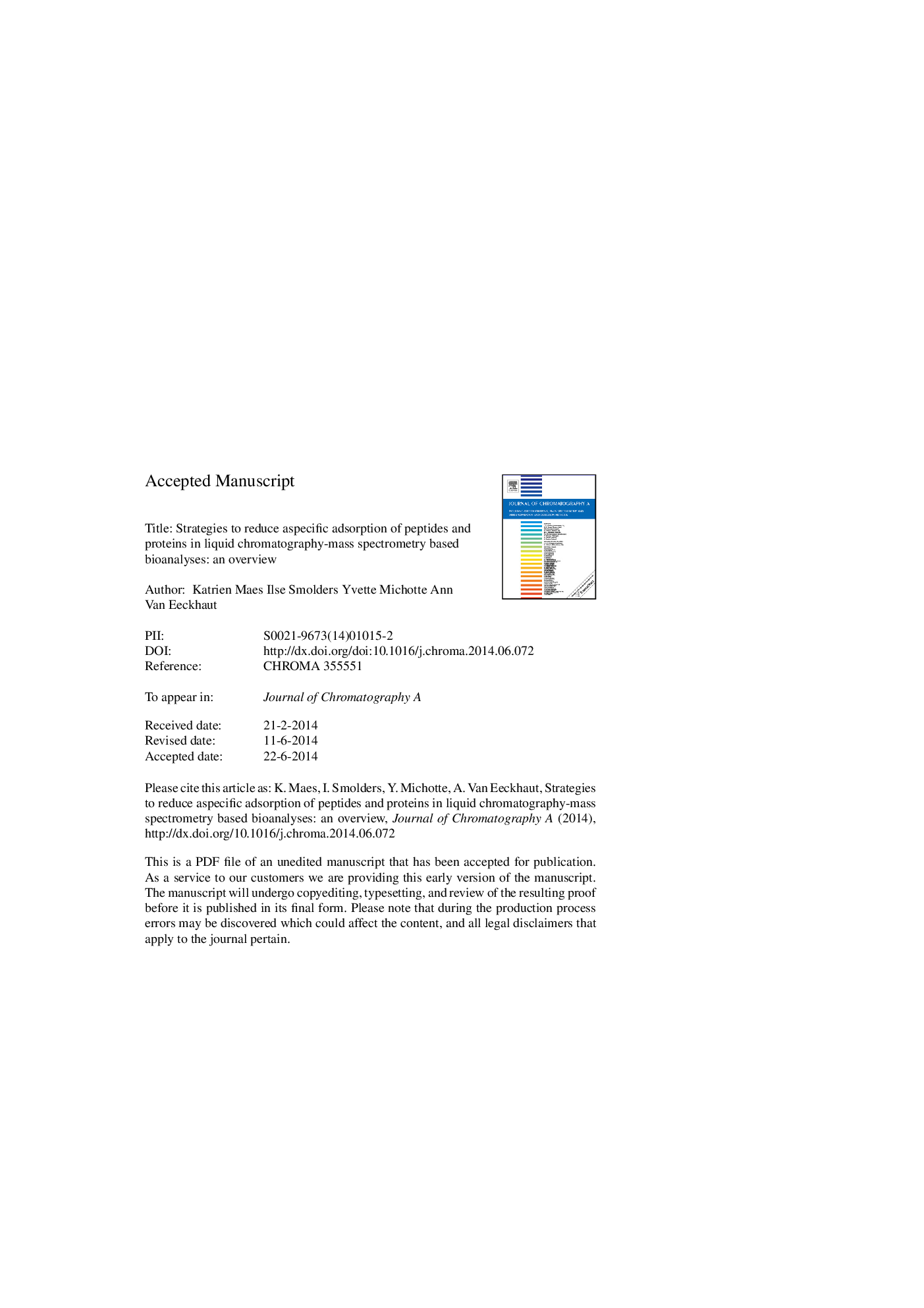| Article ID | Journal | Published Year | Pages | File Type |
|---|---|---|---|---|
| 7612628 | Journal of Chromatography A | 2014 | 47 Pages |
Abstract
In the drug-discovery setting, the development of new peptide and protein-based biopharmaceuticals attracts increased attention from the pharmaceutical industry and consequently demands the development of high-throughput LC-MS methods. Regulatory guidelines require bioanalytical methods to be validated not only in terms of linearity, sensitivity, accuracy, precision, selectivity and stability, but also in terms of carryover. Carryover results from the aspecific adsorption of analyte(s) to parts of the analytical system and thus introduces bias in both identification and quantification assays. Moreover, nonspecific binding occurs at the surface of materials used during sample preparation, such as pipette tips, sample tubes and LC-vials. Hence, linearity, sensitivity and repeatability of the analyses are negatively affected. Due to the great diversity in physicochemical properties of biomolecules, there is no general approach available to minimize adsorption phenomena. Therefore, we aim to present different strategies which can be generically applied to reduce nonspecific binding of peptides and proteins. In the first part of this review, a systematic approach is proposed to guide the reader through the different solvents which can be used to dissolve the analyte of interest. Indeed, proper solubilization is one of the most important factors for a successful analysis. In addition, alternative approaches are described to improve analyte recovery from the sample vial. The second part focuses on strategies to efficiently reduce adsorption at components of the autosampler, column and mass spectrometer. Thereby carryover is reduced while maintaining a sufficiently wide dynamic range of the assay.
Related Topics
Physical Sciences and Engineering
Chemistry
Analytical Chemistry
Authors
Katrien Maes, Ilse Smolders, Yvette Michotte, Ann Van Eeckhaut,
